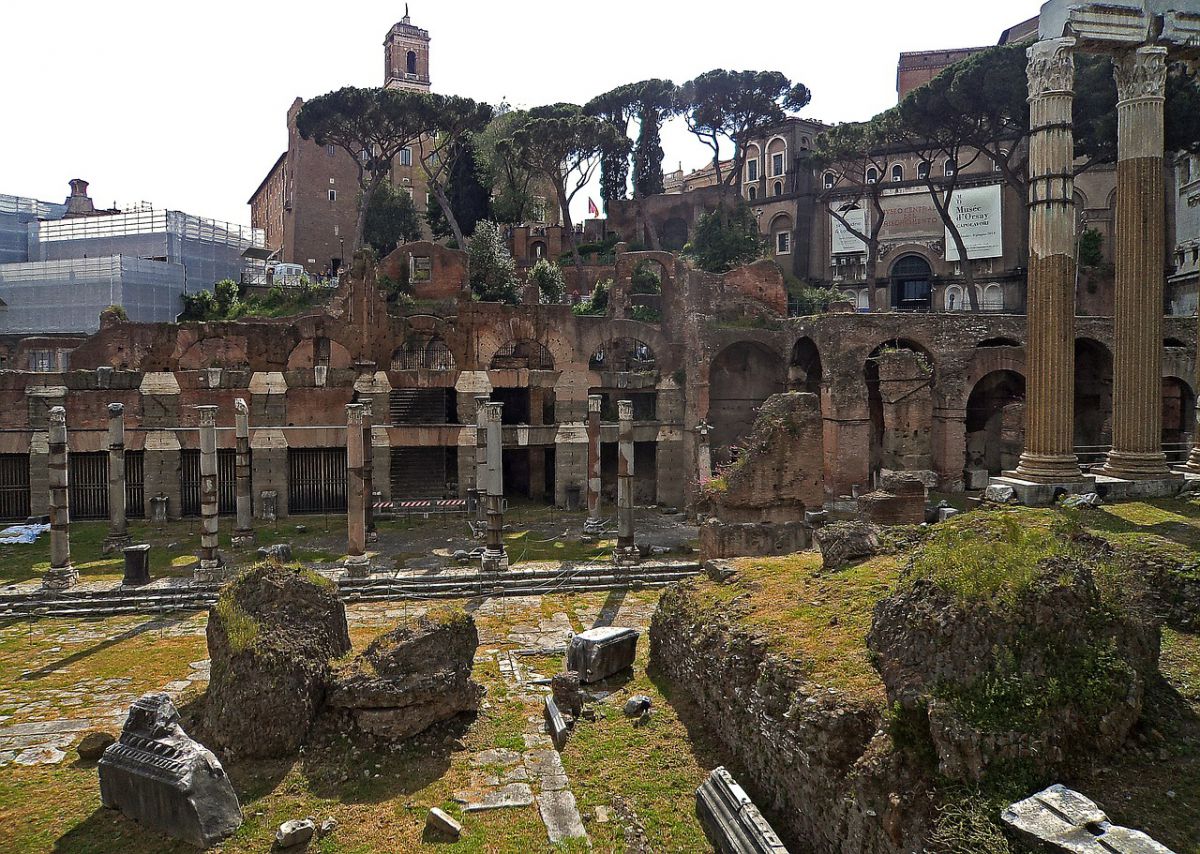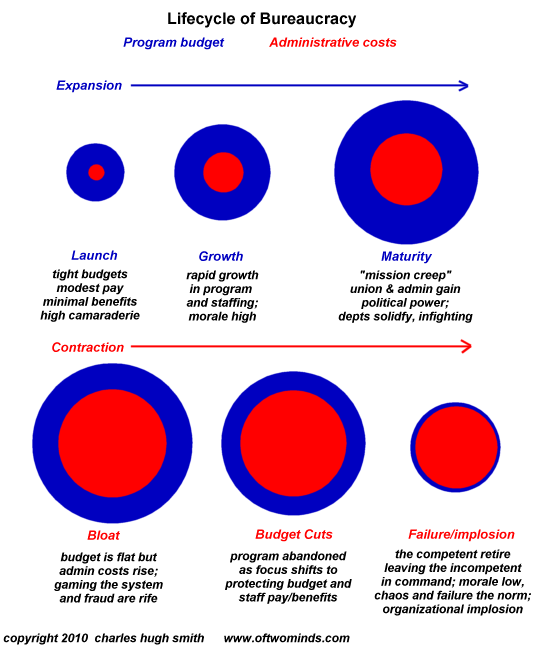
[Picture via Pixabay]
Courtesy of Charles Hugh-Smith of Of Two Minds
While collapse may be sudden, the decay that generated the collapse had been rotting away the foundation for years or decades. In distilling the vast literature on collapse into nine dynamics, I am drawing upon many other authors' work, including:
The Collapse of Complex Societies
The Great Wave: Price Revolutions and the Rhythm of History
The Long Emergency: Surviving the End of Oil, Climate Change, and Other Converging Catastrophes of the Twenty-First Century
The Shock Doctrine: The Rise of Disaster Capitalism
Overshoot: The Ecological Basis of Revolutionary Change
The Upside of Down: Catastrophe, Creativity, and the Renewal of Civilization
Collapse: How Societies Choose to Fail or Succeed
The Long Descent: A User's Guide to the End of the Industrial Age
Reinventing Collapse: The Soviet Example and American Prospects
Here are the nine dynamics of decay that lead to collapse:
1. complacency and intellectual laziness
2. profound political disunity
3. rise of unproductive complexity
4. those bearing the sacrifices opt out/quit
5. decay of effective leadership
6. rise of bread and circuses social welfare and entertainment to distract/placate restive citizenry
7. decline of wealth-producing capacity–status quo living off financial trickery
8. sclerosis–status quo controlled by vested interests
9. resource depletion/environmental damage
All of these dynamics are currently in play around the globe.
Michael Grant touched on many of these dynamics in his excellent account
The Fall of the Roman Empire, a short book I have been recommending since 2009:
There was no room at all, in these ways of thinking, for the novel, apocalyptic situation which had now arisen, a situation which needed solutions as radical as itself. (The Status Quo) attitude is a complacent acceptance of things as they are, without a single new idea.
This acceptance was accompanied by greatly excessive optimism about the present and future. Even when the end was only sixty years away, and the Empire was already crumbling fast, Rutilius continued to address the spirit of Rome with the same supreme assurance.
This blind adherence to the ideas of the past ranks high among the principal causes of the downfall of Rome. If you were sufficiently lulled by these traditional fictions, there was no call to take any practical first-aid measures at all.
If our idea of intellectual rigor is Paul Krugman dancing around the Neo-Keynesian Cargo Cult campfire waving dead chickens and spewing nonsensical claims of grand success, we're doomed. Placing our faith in failed monetary-legerdemain and policies of the past is the height of hubris and complacency. There is a cost to complacency and it's called collapse.
A lengthier book on the same subject by Adrian Goldsworthy,
How Rome Fell: Death of a Superpower, found that a key driver of decline was the constant political struggle for power drained resources and led to ineffective leadership.
This profound political disunity is not the usual staged battles of the Demopublicans vs. the Republicrats. The real disunity is between a doomed Status Quo and those willing to deal with reality. Right now those willing to deal with reality are few, but they have the distinct advantage of reality on their side, while the Status Quo has only propaganda, artifice, phony political theater and empty promises.
Another dynamic of decay is expansive, sclerotic bureaucracies that lose sight of their purpose while piling on unproductive complexity. The top leadership abandons the pursuit of the common good for personal gain, wealth and power, and this rot at the top soon spreads down the chain of command to infect and corrupt the entire institutional culture.
Grant describes how key classes of productive citizens opt out as their sacrifices are squandered on propping up rapacious elites. Those making the sacrifices look around at what they've sacrificed to maintain and decide it's no longer worth it. So they opt out or quit, draining the status quo of talent, drive and wealth-producing assets.
As the masses become debt-serfs or dependents on the state, the costs of providing bread and circuses becomes unsustainable. The state and central banks are currently papering over this mismatch by printing or borrowing money in the trillions of dollars. But financial trickery is no substitute for actual wealth creation: printing money is not the same as printing real-world wealth.
As for resource depletion and environmental damage–look no further than aquifer depletion, soil erosion, the stripmining of the seas and the poisoning of our air/water/soil on a grand scale.
Rome didn't fall so much as erode away, its many strengths squandered on in-fighting, mismanagement of resources, complacency and personal aggrandizement and corruption. That's the template for collapse, and you see it in every status quo globally.





